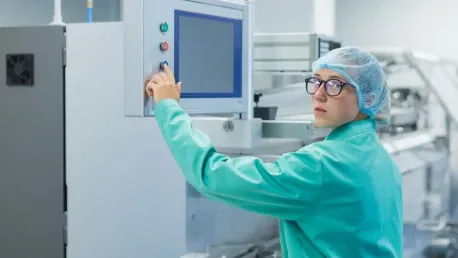Enhancing Manufacturing Capabilities
Novartis is making significant strides in its efforts to expand manufacturing capabilities to meet the growing demand for radiopharmaceutical therapies aimed at treating cancer. To achieve this, the company is not only expanding an existing facility in Indianapolis but also building a new plant in Carlsbad, California, underscoring its commitment to enhancing its production network across the United States.
Indianapolis Expansion
Novartis has already started construction at its Indianapolis site, where a new facility will play a pivotal role in producing the radioisotopes essential for the company’s radiopharmaceutical therapies. This comes on the heels of the Food and Drug Administration’s approval earlier this year to manufacture Novartis’ Pluvicto treatment at this 70,000-square-foot location, marking its increasing importance in the company’s overall production strategy.
New Plant in Carlsbad, California
Meanwhile, the new plant in Carlsbad, California, is set to strengthen Novartis’ presence on the West Coast. This initiative is intended to enhance the resilience of the company’s manufacturing network and ensure more efficient delivery of vital radiopharmaceutical medicines to patients in the region. By diversifying its production locations, Novartis aims to provide a buffer against potential disruptions at any one site, thus maintaining a steady supply chain.
Addressing Rising Demand
Key to Novartis’ approach is the company’s ambition to address the rising demand for radiopharmaceuticals. These specialized treatments deliver targeted radiation therapy directly to tumors while sparing surrounding healthy cells, making them highly sought-after in cancer treatment. However, producing these therapies is complex and time-sensitive due to the rapid degradation of radioisotopes, adding an extra layer of urgency to Novartis’ expansion efforts.
Strategic Location and Supply Chain Efficiency
A crucial element in Novartis’ strategy is ensuring a robust supply chain throughout the United States. The choice of Indianapolis as a key site was partly based on its logistical advantages, with nearly half of the U.S. population living within a 12-hour drive. This strategic location allows Novartis to serve a significant portion of the patient population efficiently.
Strategic Acquisitions and Industry Trends
In parallel with its manufacturing expansions, Novartis is also pursuing strategic consolidations to bolster its leadership in the radiopharmaceutical market. The recent acquisition of Mariana Oncology for $1 billion exemplifies this strategy, aimed at expanding Novartis’ radiopharmaceutical pipeline with potential treatments for small cell lung cancer and other malignancies.
The broader industry trend sees major pharmaceutical companies like Bristol Myers Squibb and Eli Lilly investing heavily in the radiopharmaceutical sector. This burgeoning market is also witnessing the emergence of over a dozen startups developing new radiopharmaceutical products, reflecting a shared belief in the significant future potential of these therapies.
Proactive Responses to Production Setbacks
Noteworthy in the article is Novartis’ proactive stance in response to previous production setbacks. The company faced temporary suspensions of Pluvicto and Lutathera production at facilities in Italy and New Jersey due to potential quality issues. The new and expanded facilities are part of Novartis’ strategy to prevent such disruptions and ensure a consistent production flow.
Conclusion
In conclusion, Novartis’ strategic expansions are designed to meet the increasing demand for radiopharmaceutical therapies by enhancing manufacturing capabilities, ensuring supply chain resilience, and maintaining its leading market position. The article effectively portrays Novartis’ considerable investments in infrastructure and strategic acquisitions, while addressing the complexities and urgency inherent in radiopharmaceutical production.









